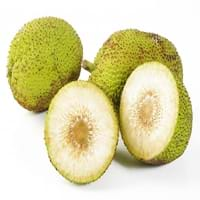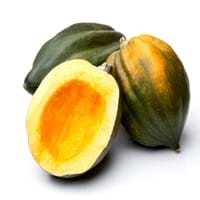Health Benefits
Cancer prevention, Heart care, Maintains healthy cholesterol level, Treatment of skin Diseases
Anti-inflammatory properties, Arthritis treatment, Regulates Blood Sugar
General Benefits
Boosts immune system, Digestive aid, Helps in weight loss, Maintains healthy cholesterol level
Boosts immune system, Controls blood sugar levels, Digestive aid
Skin Benefits
Anti-aging benefits, Skin rejuvenation, Treatment of skin diseases
Nourishes skin, Protects skin from oxidative stress
Hair Benefits
Protects hair, Regulates hair growth, Treatment of dandruff
Prevents hair loss, Promotes longer and healthier hair, Regulates hair growth
Allergy Symptoms
Hives, Inflammation of nose, Swelling of mouth, tongue or lips
Asthma, Red rash, Swelling of mouth, tongue or lips
Side Effects
Allergic reaction
Diarrhoea, Vomiting
Best Time to Eat
Along with meal, As a snack in the late afternoon, Don't consume at night and before bed, Don't eat after meal
Along with meal, As a snack in the late afternoon, Don't eat after meal, Eat the fresh ones, avoid mixing with any other foods, don't eat after meal.
Vitamin B5 (Pantothenic Acid)
Vitamin C (Ascorbic Acid)
Vitamin E (Tocopherole)
Not Available
Vitamin K (Phyllochinone)
Not Available
Lutein+Zeaxanthin
Not Available
Calories in Fresh Fruit with Peel
Not Available
Calories in Fresh Fruit without Peel
Not Available
Calories in Frozen Form
Not Available
Calories in Dried Form
Not Available
Calories in Canned Form
Not Available
Calories in Jam
Not Available
Type
Fruit vegetable, Tropical
Berry
Season
All seasons
Winter
Varieties
Koqo, Tamaikora, Temaipo, Uto Kuro, Samoa, Buco Ni Viti and Kulu Dina
Bush Table Queen, Heirloom Table Queen, Festival Hybrid, Early Acorn Hybrid, Table Ace, Ebony and Cream of the Crop
Color
White, Yellow
Dark green, Green-yellow, Orange green
Inside Color
White
Yellow
Origin
South Pacific
Central America, North America, Unknown
Soil Type
Loam, Sand, Sandy loam, Well-drained
Well-drained
Climatic Conditions
Humid, Rainfall, Warm
Cold, Sunny
Facts about
- The milky sap of breadfruit tree is used as glue & bark is used to make papers.
- Breadfruit tree produces 1st fruit after 2-3 years from planting & remains productive for decades.
- The seeds of breadfruit are edible.
- It was named as Acorn Squash for its resemblance to a large ribbed acorn.
- It is said that squash was being grown in Mexico as long as 10,000 years ago.
- It was the first food cultivated by native American Indians.
Top Producer
Jamaica
China
Other Countries
Africa, India, United States of America
Egypt, India, Iran, Italy, Mexico, Russia, Turkey, Ukraine, United States of America
Top Importer
United States of America
Costa Rica
Top Exporter
Jamaica
United States of America
Botanical Name
Artocarpus altilis
Cucurbita Pepo
Synonym
Artocarpus communis or Artocarpus incisa
Winter Squash
Subkingdom
Tracheobionta
Tracheobionta
Division
Magnoliophyta
Magnoliophyta
Class
Magnoliopsida
Magnoliopsida
Subclass
Magnollidae
Dillenhidae
Order
Rosales
Cucurbitales
Family
Moraceae
Cucurbitaceae
Genus
Artocarpus
Cucurbita
Generic Group
Mulberry
Not Available
Compare Breadfruit and Acorn squash
It is important compare Breadfruit and Acorn squash as both the fruits have a different nutritional value. Their comparison can be done on the basis of their vitamin and mineral content, calories, benefits as well as characteristics, making it easier for us to choose the best fruit for our diet. Their general health benefits are as follows:
Breadfruit Benefits: boosts immune system, digestive aid, helps in weight loss and maintains healthy cholesterol level.
Acorn squash Benefits: boosts immune system, controls blood sugar levels and digestive aid.
Fruits are also used as a remedy for various hair problems. The hair benefits of Breadfruit are: protects hair, regulates hair growth and treatment of dandruff and hair benefits of Acorn squash are: prevents hair loss, promotes longer and healthier hair and regulates hair growth. Some fruits are known to cause allergic reactions. The allergy symptoms of first fruit are: hives, inflammation of nose and swelling of mouth, tongue or lips and the symptoms of second fruit are: asthma, red rash and swelling of mouth, tongue or lips. Get sorted Breadfruit vs Acorn squash comparison with the help of fruit comparison tool by fruitvs.com.









